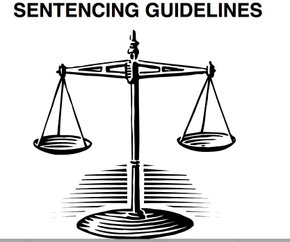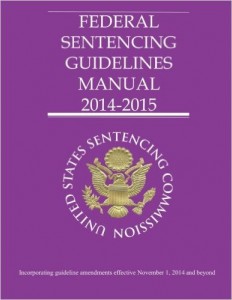Vagueness Doctrine Does Not Apply to Federal Sentencing Guidelines
Beckles v United States
No. 15-8544
United States Supreme Court
Decided on March 6, 2017
Issue: Whether the Federal Sentencing Guidelines can be challenged under the Due Process Clause and the void for vagueness doctrine.
Holding: The U.S. Supreme Court held that the Federal Sentencing Guidelines cannot be challenged under the vagueness doctrine of due process and that, under Booker, the guidelines have been rendered effectively advisory. The guidelines guide district courts in exercising their discretion, but do not constrain that discretion in sentencing. Because the sentencing guidelines do not constrain?but only advise, they cannot be challenged under the vagueness doctrine of due process.
Facts: Petitioner was convicted of possession of a firearm by a convicted felon under 18 U.S.C. 922(g)(1). The presentence investigation report indicated that the petitioner was subject to sentencing enhancement as a “career offender” under the U.S. Sentencing Guidelines.
The District Court concluded that the petitioner qualified as a career offender. Petitioner was more than 18 years old at the time of the offense, his criminal history included multiple previous convictions, and those convictions included controlled substance offenses. The District Court also held that petitioner qualified as a violent offender under 922(g)(1). Petitioner’s classification as a violent offender ultimately enhanced his sentence to 360 months in prison.
Petitioner filed a motion to vacate his sentence under 28 U.S.C. 2255, asserting that his unlawful possession of a firearm was not a violent offense and that, as a result, the court erroneously classified him as a career criminal under the Guidelines. Petitioner asserted that the residual clause of 4B1.2(a) was unconstitutionally vague under Johnson, and the Supreme Court granted review.
Analysis: The Sentencing Guidelines provides that a defendant is classified as a “career offender” if:
(1) “the defendant was at least 18 years old at the time of the offense was committed”; (2) “the instant offense of conviction is a felony that is either a crime of violence or a controlled substance offense”; and (3) “the defendant has at least two prior felony convictions of either a crime of violence or a controlled substance offense.” USSG 4B1.1(a).
A crime of violence is described as any offense under federal or state law, punishable by imprisonment for a term exceeding one year that:
“(1) has as an element the use, attempted use, or threatened use of physical force against the person of another, or (2) is burglary of a dwelling, arson, or extortion, involves use of explosives, or otherwise involves conduct that presents a serious potential risk of physical injury to another.” 4B1.2(a).
The petitioner argued that the residual clause within 4B1.2(a) (“or otherwise involves conduct that presents a serious potential risk of physical injury to another”) was unconstitutionally vague under Johnson. However, Johnson’s decision was based on the language of the residual clause within the Armed Career Criminal Act, not the Sentencing Guidelines.
The Court noted that the vagueness of the ACCA’s residual clause was subject to clarification because it involved a fixed permissible sentencing range. However, unlike the ACCA, the Sentencing Guid elines “merely guide the exercise of a court’s discretion in choosing an appropriate sentence within the statutory range,” which render them unfit to a vagueness challenge under Due Process.
elines “merely guide the exercise of a court’s discretion in choosing an appropriate sentence within the statutory range,” which render them unfit to a vagueness challenge under Due Process.
Types of laws that the Court has invalidated as “void-for vagueness” include laws that define criminal offenses and laws that fix the permissible sentences for criminal offenses. The Court explained that the “void for vagueness” doctrine “requires that a penal statute define the criminal offense with sufficient definiteness that ordinary people can understand what conduct is prohibited in a manner that does not encourage arbitrary and discriminatory enforcement.”
Recognizing that the Guidelines are “the starting point and the initial benchmark for sentencing,” the Court reaffirmed the fact that a court no longer relies “exclusively on the Guidelines range,” but, instead, the court “must make an individualized assessment based on the facts presented.” In sum, because the Guidelines are exercised with discretion by the sentencing judge, they are not subject to the vagueness challenge.


